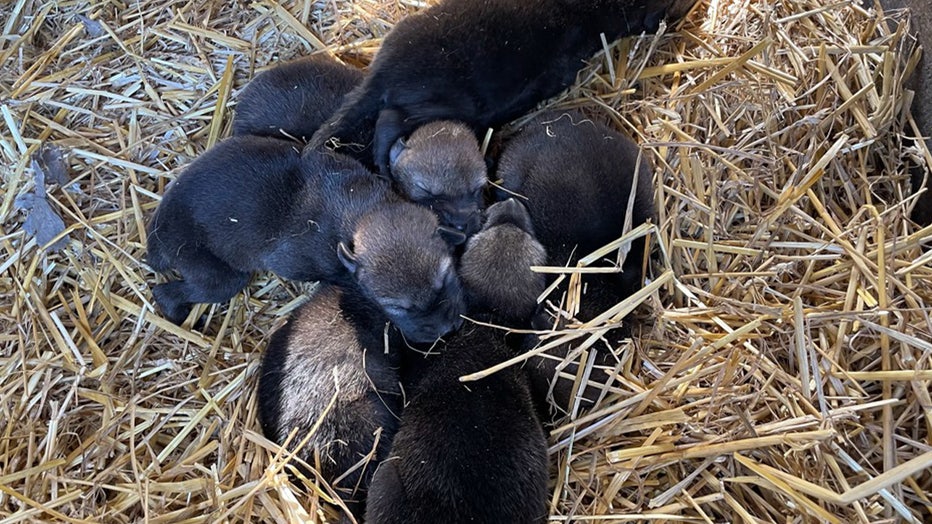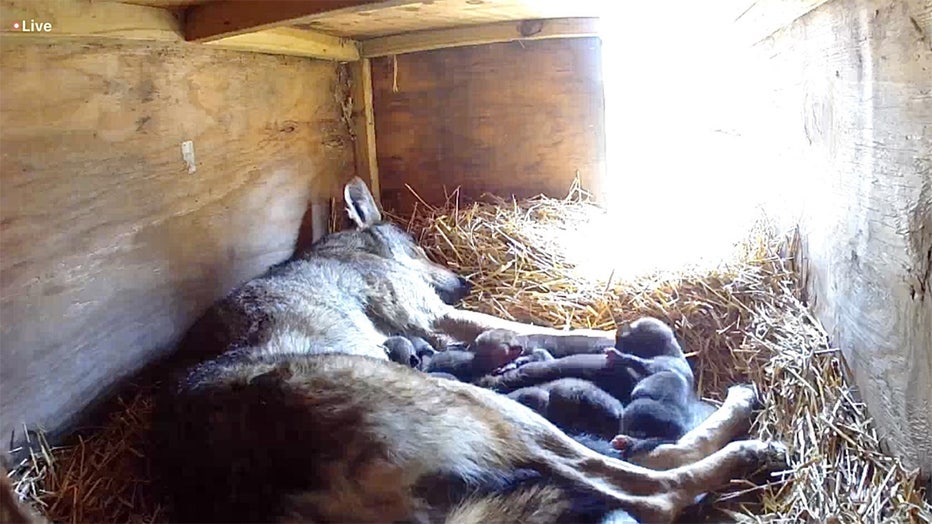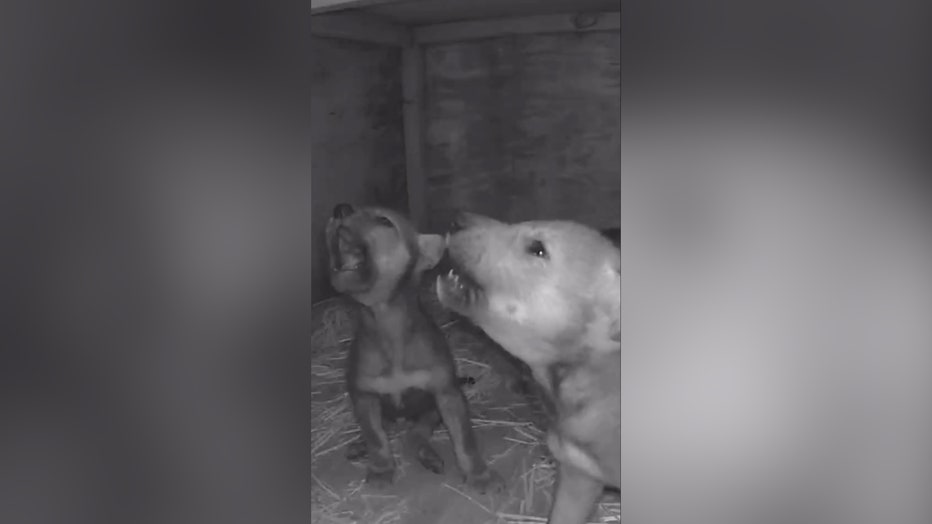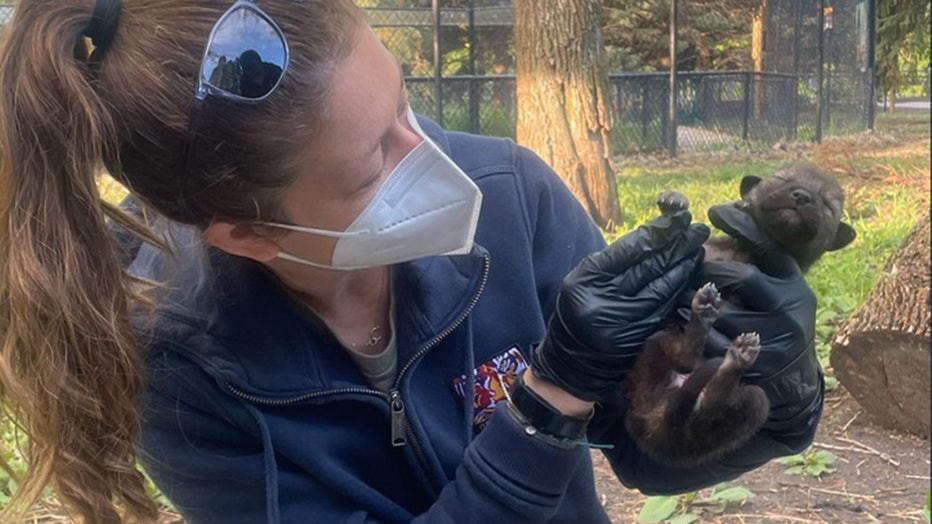Watch: Adorable red wolf pups learn to howl from parents

Endangered red wolf pups learn to howl
The red wolf is the most endangered wolf species in the world. In an effort to revive the population, six pups were born are healthy and happy at the Great Plains Zoo located in Sioux Falls, South Dakota.
They’re so stinkin’ cute.
A litter of weeks-old red wolf pups learned to howl together and it was all captured on video.
The Great Plains Zoo in Sioux Falls, South Dakota, welcomed six red wolf pups on May 4. The litter included two females and four males.

Newborn red wolf pups at Great Plains Zoo. (Great Plains Zoo)
"It was a birth we hoped for. They are part of the Red Wolf Species Survival Plan (SSP). Parents Camelia and Uyosi were placed at our zoo by the SSP in October 2022, with the hope they would breed. They have gotten along well, as breeding was a success!" a zoo spokesperson told FOX TV Stations.

Newborn red wolf pups at Great Plains Zoo. ( Great Plains Zoo)
In video captured from inside the red wolf den on June 3, the pups truly showcased their howling chops, belting out high-pitched and adorable howls after hearing their parents.

Still image from video of red wolf pups at Great Plains Zoo howling. (Great Plains Zoo)
"Although they're only a few weeks old, the pups are already learning pack behavior from their parents, Camelia and Uyosi. This includes howling and learning to cooperate as a group!" the zoo wrote in a Facebook post.

One of six red wolf pups born at Great Plains Zoo on May 4. (Great Plains Zoo)
The red wolf is the most endangered of all the wolf species, according to the U.S. Fish and Wildlife Service (FWS) website.
As of May 2023, there are an estimated 20 to 30 red wolves in the wild and nearly 280 in captivity.
The red wolf species was originally listed as "threatened with extinction" in 1967 and is currently listed as endangered, according to the Endangered Species Act of 1973.
The species was declared extinct in the wild in 1980 but just over a dozen were captured in an attempt to save the species through a captive breeding program, according to FWS.
By 1987, red wolves were being reintroduced into the wild and by 1994, over 60 adult red wolves were released in northeastern North Carolina.
Under close observation, red wolves were able to maintain territories, formed packs and successfully bred in the wild by the mid 90s.
The red wolf wild population reached a high of 120 known animals however that quickly declined after 2012 due to humans – hunting and cars – and mating with coyotes, which was exacerbated by humans, according to FWS.
It wasn’t until 2022 that a pure and wild red wolf litter was born.
While that is good news, the red wolf population is still dangerously low and conservation efforts continue in captivity.
This story was reported from Los Angeles.

